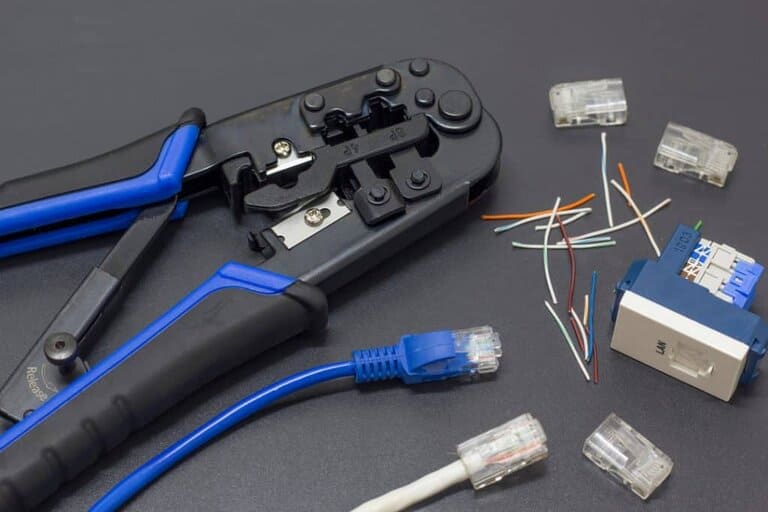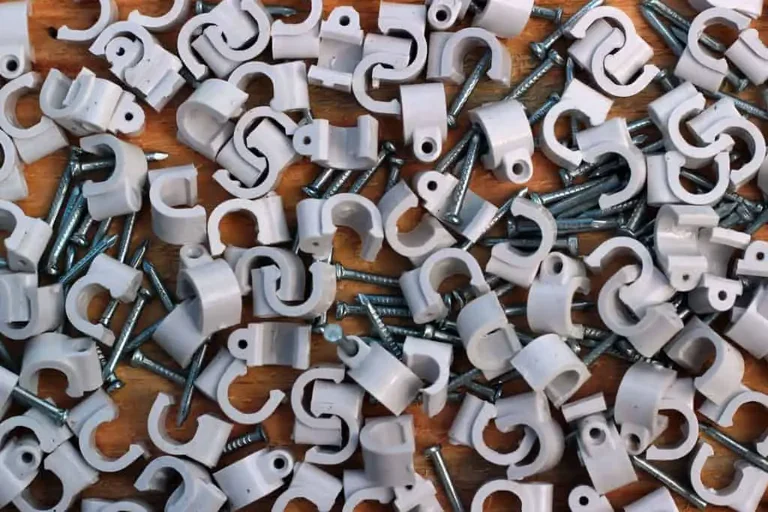Cover up loose ethernet cables by using a PVC cable concealer. Measure the length of the cord that needs to run along the walls, cut up the PVC cover accordingly, and stick it while tucking in the cables.

Devices linked to an ethernet cable show a faster internet connection. But often, people suffer at the hands of lower bandwidth WiFi to prevent the mess created by ethernet cables dangling along walls. Uncovered cables are a pain to look at, but they are also a safety hazard and prone to damage.
Since I am an avid gamer, I have gained quite a lot of knowledge regarding how to run ethernet cables along walls. This article will impart my wisdom about the hardware you will need and the exact methods to “nail” the job. (Pun intended)
But first, let’s discuss why an ethernet connection is way better than WiFi.
Why Is Ethernet Better Than WiFi?
Even though a WiFi connection is convenient and more modern, it still doesn’t beat the numerous benefits of the age-old ethernet cable. Here are a few advantages ethernet connection offers over wireless WiFi;
- Devices with ethernet connection show an uninterrupted and rapid connectivity
- Ethernet cables do not lower the bandwidth of your internet
- Unlike WiFi, with an ethernet connection in all rooms of your house, you will have no poor connectivity zones
- You can connect any device to your cable connection and enjoy a smoother than WiFi streaming
Hardware Needed To Run An Ethernet Cable Along Walls
Here are a few cable holders and concealers that you can use to run ethernet cable along walls neatly;
1. Coaxial Clamps
These are little cable clamps that look like the letter “n.” The cable goes through the curved loop of the “n,” and the vertical line fixes it to the wall with the help of a nail.
These clamps keep the cables in place but do not necessarily cover them. Plus, they are tiny and can only hold one wire at a time.
Here’s how to use them;
How To Install
- Mark the line along which you plan to run your ethernet cable
- Put a dot at an interval of two feet along a straight line or every curve and turn
- Run the cable along the line and nail a coaxial clamp on each dot, threading the cord within the loop.

2. PVC Cable Concealers
The PVC cable concealers efficiently cover up loose wires along your wall and keep them tucked out of sight.
These PVC covers come in standard white color, but you can use latex-based paint to camouflage them to your walls. Also, they come in various sizes, so you can opt for covering more than a few wires together by getting a broader PVC cable concealer.
Installing them is straightforward and requires little time. You will need a cutter and an adhesive, and you are good to go.
How To Install
- Mark and measure the length of the wall your cable needs to run along
- Cut the PVC concealer as per your measurements
- Use an adhesive to stick them along the wall tucking the cable inside.
3. Corner Raceway Cord Cover
You can use a PVC cable concealer along with the corners of your walls, too, but they are not manufactured to give the most seamless finish. However, a corner raceway cord cover perfectly fits the intersections between walls and floor and goes relatively unnoticed.
You can also paint them to blend with your wall paint like PVC concealers. Also, they are just as easy to install.
How To Install
- Mark the length across the corners of the wall you need to run the ethernet cable
- With a cutter, cut the corner cover in the correct size
- Use an adhesive or nails to fix the covers in place
4. Baseboard Cable Cover
Unlike PVC and corner covers, baseboard cable covers look better and blend seamlessly with most interiors.
Also, they are almost a cone or quarter-circle shape which fits in the junction of walls and floor. So they are perfect for running the cable through long distances.
You can paint them too, to match your walls. But remember to do it before you put them up.
Here’s how you fix them;
How To Install
- Mark the areas your cable needs to run
- Cut the cover as per the measurements
- Tuck in the cables within the hardboard cover and stick it using adhesive
5. PVC Pipes
Although PVC pipes are not the most aesthetic, they are a decent make-do method of concealing your ethernet. They are cheap, moldable, and readily available at all hardware stores.
You can staple the pipes in place after running your ethernet cables through them. You can bend them when your wall turns using a heat gun.
But, since PVC tubes are not made to cover wires, it is not entirely safe to use them for this purpose.
How To Install
- Measure the length of the walls the ethernet cable needs to run along
- Cut a PVC pipe keeping a few feet extra to make room for miscalculations
- Nail the tube in place and bend the pipe at turns using a heat gun
FAQs On How To Run Ethernet Cable Along Walls
What is an Ethernet cable?
Ethernet is the cable that connects a desktop to the local area network (LAN) to create an internet connection.
Why do I need to cover ethernet cables with PVC concealers?
Although ethernet cables don’t carry enough current that could harm you, it is still a good idea to keep them covered using any PVC covers. The covers will keep them safe from damage and maintain an efficient internet connection.
Can I run an electrical wire and an ethernet cable through the same conduit?
Yes, you can. Running an electrical wire and ethernet cable through the same conduit is possible. However, I won’t recommend doing it. The magnetic field from electrical appliances such as microwave ovens or vacuum cleaners interferes with internet connectivity and compromises its quality.